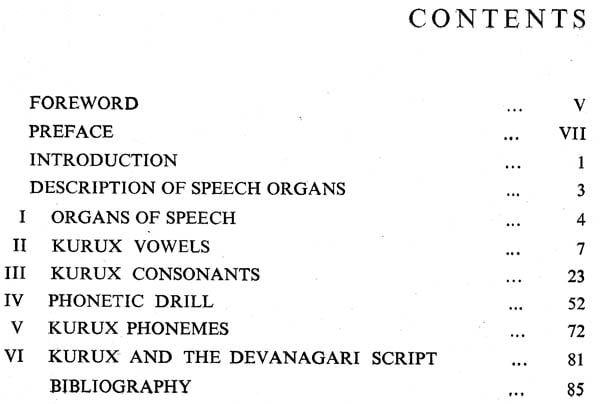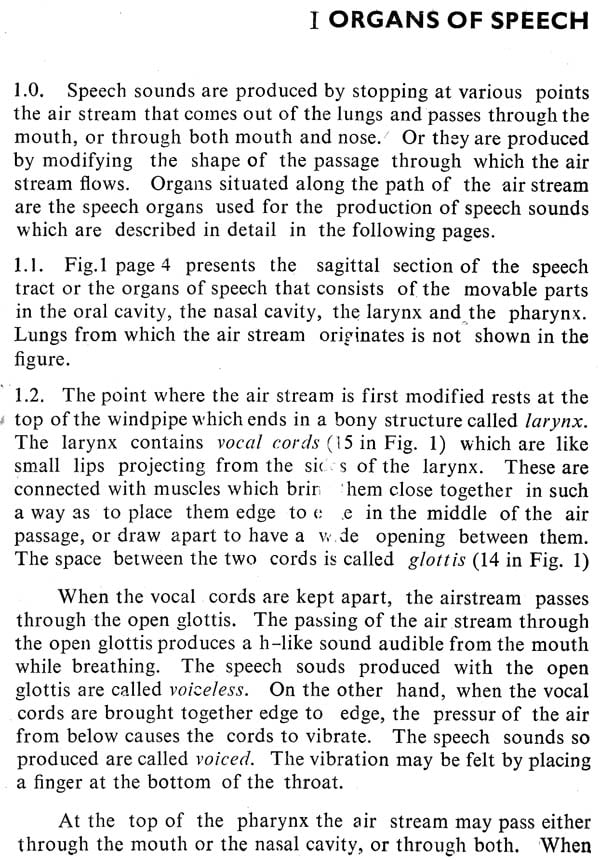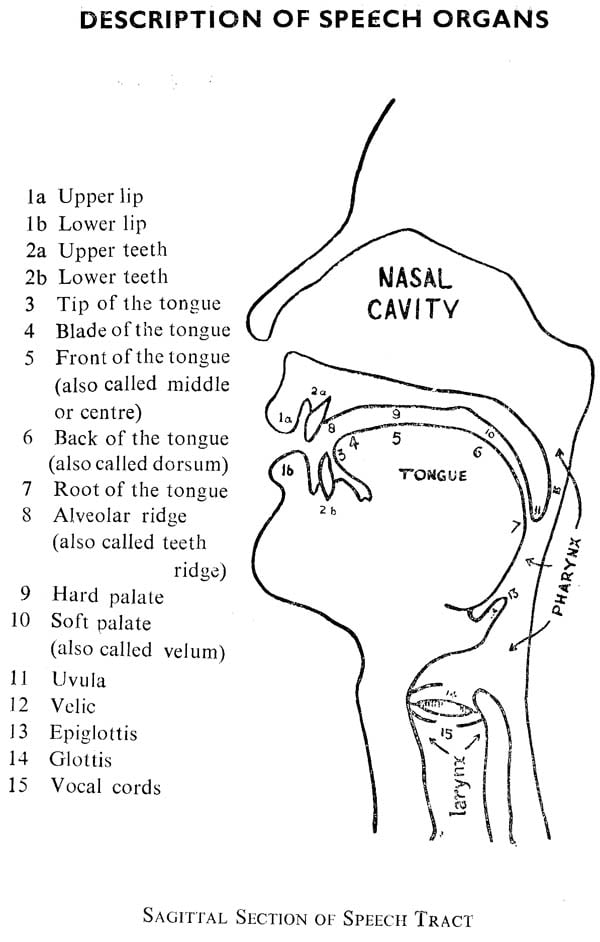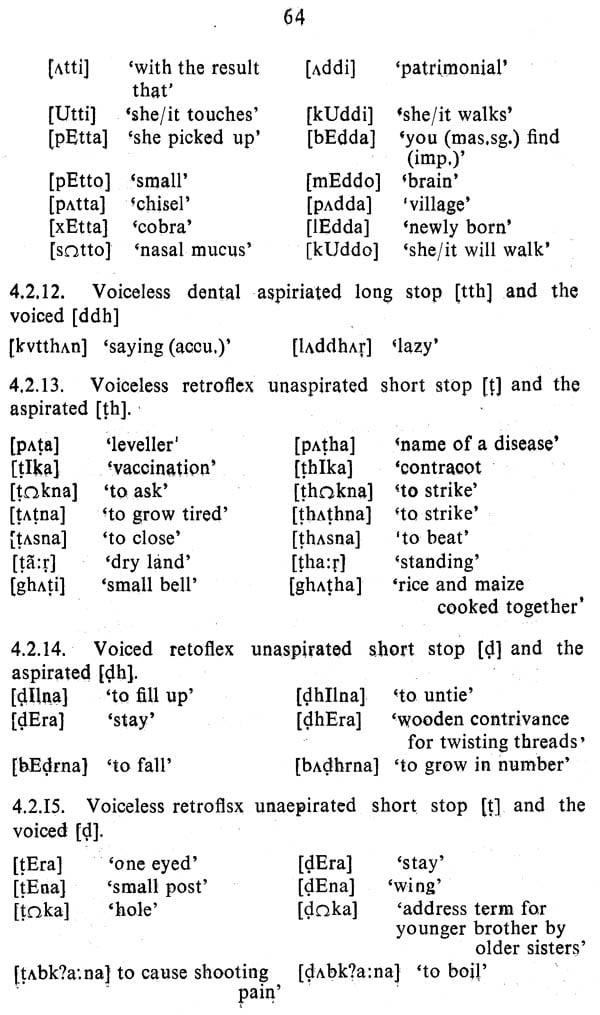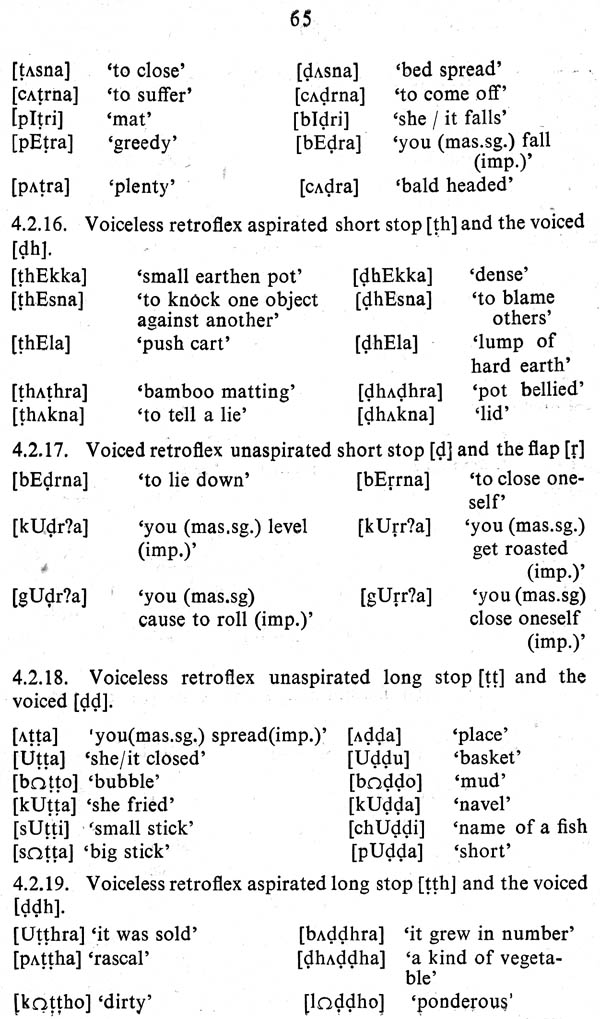
Kurux Phonetic Reader (An Old and Rare Book)
Book Specification
| Item Code: | NAW244 |
| Author: | Francis Ekka |
| Publisher: | Central Institute Of Indian Languages, Mysore |
| Language: | Kurux and English |
| Edition: | 1973 |
| Pages: | 80 |
| Cover: | PAPERBACK |
| Other Details | 8.50 X 5.50 inch |
| Weight | 120 gm |
Book Description
The Central Institute of Indian Languages was set up on the 17th July, 1969 with a view to assisting and co-ordinating the development of Indian languages. The Institute was charged with the responsibility of serving as a nucleus to bring together all the research and literary out-put from the various linguistic streams to a common head and narrowing the gap between basic research and developmental research in the fields of languages and linguistics in India. The Institute and its four regional language centres are thus engaged in research and teaching which lead to the publication of a wide-ranging variety of materials. Preparation of materials designed for teaching/learning at different levels and suited to specific needs is one of the major areas of interest of the Institute. Basic research relating to the acquisition of language and study of language in its manifold psycho-social relations constitute another broad range of its interest. The publications will include materials produced by the members of the staff of the Central Institute of Indian Languages and its Regional Language Centres and associated scholars from universities and institutions, both Indian and foreign.
The Central Institute of Indian Languages has initiated the Primetime Reader Series in Indian languages with a view to presenting the range of phonetic variation obtaining in this sub-continent and demonstrating the closeness of language on the basis of phonetic patterning. These Readers are biased towards learning the sound systems of languages. Thus it is hoped that this series will be of interest to both scholars who are interested in phonetic studies and practical learners of languages who wish to make a beginning in their language study.
If these materials help solving the problems in the State and help in understanding the people speaking the language, then our efforts will be deemed to have been amply rewarded.
About six per cent of the population of India is tribal. There have been three views about how best they can be drawn into the main stream of our national life. One obvious way is not to draw them at all and leave them alone and preserve their culture and traditions intact as museum pieces. The other extreme view has been to sort of drown them in the mainstream and completely assimilate them. The third view is to see that the best in their traditions and cultures that is consistent with modern life is preserved and they are integrated so that they maintain their individuality and at the same time participate in and benefit by the modern developments. It is also the considered view of all the people that matter that these tribal’s should be integrated with the regional population amidst whom they live. This can be done only when they are approached through their own mother tongues. It is also obvious that it is impracticable to use their mother tongues throughout their education. Their mother tongues are to be used so that they can effectively be integrated into the regional population. This does not mean that they should forsake their mother tongues, but only means that they should gain native-like fluency in their respective regional languages as early as possible. It is for this purpose that their languages have, to be scientifically studied and grammatical sketches and vocabularies have to be prepared. The scripts of the regional languages have to be adopted for writing their languages. Primers and textbooks have to be prepared.
To do all this the expertise of the linguists of the country should be placed at the disposal of persons interested in the education of tribal’s. Administrators who come in frequent contact with the tribal’s have in learn to speak fluently the tribal language in question. Learning a language implies an acquisition of a good pronunciation.
Firstly, the learner must acquire the capacity to recognise readily without any error the various speech sounds occurring in the language he is learning. Secondly, he must acquire the capacity to produce them with the help of his own vocal organs. Thirdly, he must acquire the capacity to produce the individual speech sounds he has learnt in sequences. In addition to these three skills, which may be sufficient to gain a reasonable pronunciation, the learner, depending on his needs, has to get a mastery over the orthography of the language he is learning. This involves developing automatic associations between written forms and speech sounds.
The Phonetic Readers in this series have been designed with the above points in view. They are mainly intended to meet the needs of administrators who have to learn the language in question.
Each Reader consists of a brief exposition about the organs of speech and their functions. It also introduces some technical terms. Then each speech sound is described in detail giving the movements of the vocal organs. Each description is rounded off by the technical term for that sound. A brief phonemic statement which meaningfully groups the sounds described in the preceding sections is also appended. A statement about the correspondences between the phonemes of the language and the letters used to write them comes at the end. In this section suggestions for improvements in the existing orthography are made. In the case of languages which have not yet been written, suggestions for adopting the script of the regional language are made.
It may be too much to claim that these Readers are perfect. There are lacunae still to be filled up. The most conspicuous of these is the lack of information on intonation. Though it is true that certain features of pronunciation can only be learnt with the aid of a teacher, the utility of such Readers cannot be underestimated. It is hoped that these Readers will be useful to even persons other than those for whom they are intended.
Language is basically a means of communication by which man expresses his ideas in such a way as to be understood by others. The principal languages of the world, including the six- teen officially recognized Indian languages such as Hindi, Marathi, Bengali, Tamil etc., are both spoken and written, though a very large number of languages are only spoken. Kurux, which belongs to the North-Dravidian language family, is spoken by a total number of 11,41,804 Kurux people (also known as Oraon), living mainly in the adjoining districts of the States of Uttar Pradesh, Bihar, West Bengal, Orissa and Madhya Pradesh. Outside this area, it is spoken by immigrants most of whom work as labourers in Maharashtra, Tripura and Nagaland and in the tea-gardens of Assam and West Bengal. Outside India, a good number of Kuruxs live in Nepal and Bhutan.
This book is intended to be a ready-to-use guide for the non- Kurux adults who need to learn the Kurux language to work among the Kurux people. It will be particularly useful to those Kuruxs who teach the Kurux language to the non-Kurux adults in various training and orientation centres. They need to know basic functions of the speech organs that are involved in the production of speech sounds so as to be able to identify and correct the pronunciations. Professional linguists may also find this book useful since it attempts to give a detailed phonetic description of each Kurux segmental sound.
In this book we will deal with the phonetics of Kurux which represents my own speech. We will explain how a learner should acquire correct pronunciation of each of the sounds. It is always useful to transcribe the sounds of a language in the phonetic alphabet in which each symbol or letter represents one and only One sound wherever it occurs. Phonetic symbols are written between square brackets and represent sounds as they are actually pronounced by the speaker. Phonetic values of the symbols will be explained when we deal with them in the following chapters.
In order to learn a language one must pronounce correctly the sounds which constitute words along with the intonation and the rhythm of the sentence. It is important to keep in mind that each language has its own set and system of sounds different from others. This point should particularly be emphasized for those learners of Kurux who speak one of the Indo-Aryan languages. Kurux has borrowed a considerable number of words from its neighbouring Indo-Aryan languages and the speakers of the latter are likely to pronounce the sounds of such borrowed words like the sounds in their own language. They should always remember that the sounds of such borrowed words are modified in Kurux in accordance with its sound system.
This book is organized in the following way: Chapter I gives general introduction to the organs of speech. Chapters II and III present the phonetic description of the Kurux vowel and consonant sounds respectively. The sounds which share some phonetic features but differ in one or two features are described in relation to each other. Chapter IV presents a list of words for oral practice. Chapter V presents a list of Kurux phonemes. Chapter VI shows how the Kurux phonemes can be represented with the Devanagari letters.
I am indebted to Dr. D. P. PATTANAYAK who initiated this project, to Dr. E. ANNAMALAI for his supervision and numerous suggestions on the original draft; to Dr. B. G. MISHRA for his valueable suggestions on the use of the Devanagari letters for Kurux and to other members of the academic staff of the Central Institute of Indian Languages for their help and co-operation.
My thanks are also due to Miss H.N. SUMANGALA for having neatly typed the manuscript; to Shri. H.L. N. Buarati for having seen the book through the press, and to Messrs. SriVenkateswara Printers for having printed the book in a short time.
**Contents and Sample Pages**
